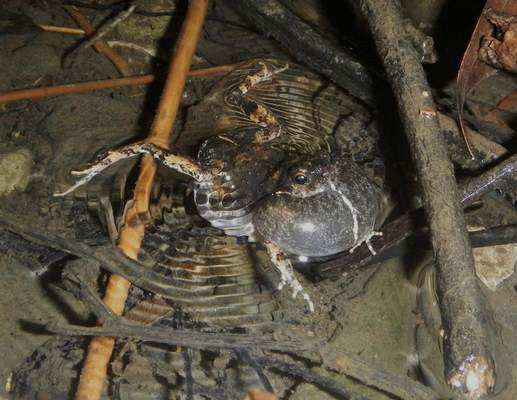City frogs and rainforest frogs don’t sing the same tune, researchers say.
A study released Monday examined why Panama’s tiny tungara frogs adapt their mating calls in urban areas – an unexpected example of how animals change communication strategies when cities encroach on forests.
These frogs take advantage of the relative absence of eavesdropping predators in cities to belt out longer love songs, which are more alluring to female frogs.
Tungara frogs don’t croak like American bullfrogs. To our ears, their distinctive call sounds like a low-pitched, video-game beep.
Every evening at sunset, the brown frogs crawl into puddles to serenade mates. The lady frog selects a mate largely based on his love song.
Researchers found the urban frogs call faster, more frequently and add more embellishments – a series of staccato “chucks” on the end of the initial whine – compared with those in the forest.
Those fancy urban love songs are three times more likely to attract the ladies, as scientists learned by playing back recordings of both city and forest frog calls to an audience of female frogs in a laboratory. Thirty of 40 female frogs hopped over to the speaker playing the urban frog calls, the researchers report in the journal Nature Ecology & Evolution.
Whether the female frogs hailed from the city or forest themselves, they showed the same preference for fast-paced, complex crooning that combines high and low tones in quick arrangements.
Study co-author Michael J. Ryan, a biologist at the University of Texas who has studied tungara frogs more than 30 years, said that the high and low notes likely stimulated the inner and outer ear chambers of female frogs in a pleasurable or interesting
